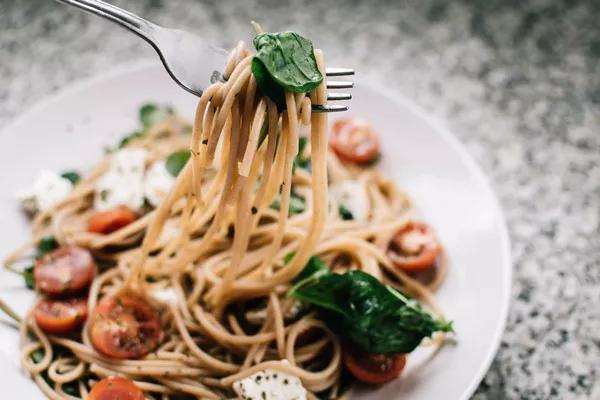Wheat intolerance, often confused with celiac disease or wheat allergy, encompasses a range of gastrointestinal and systemic symptoms that occur after consuming wheat products. Unlike celiac disease, which is an autoimmune disorder triggered by gluten—a protein found in wheat, barley, and rye—wheat intolerance (sometimes referred to as non-celiac wheat sensitivity) does not typically involve an autoimmune response or allergic reaction. Managing wheat intolerance primarily involves dietary modifications to avoid specific triggers. This comprehensive guide will help individuals understand which foods to avoid, alternatives to incorporate into their diet, and tips for maintaining a balanced and nutritious diet without wheat.
What is Wheat Intolerance?
Wheat intolerance involves adverse reactions to wheat that do not involve the immune system as seen in wheat allergy, or an autoimmune process like celiac disease. Symptoms can vary widely among individuals but often include bloating, abdominal pain, diarrhea, and in some cases, fatigue and mood disturbances. The exact cause of wheat intolerance is still under research, with some studies suggesting that other components of wheat besides gluten could be responsible for the symptoms.
Identifying Wheat in Your Diet
Before diving into specific foods to avoid, it’s crucial to understand the ubiquity of wheat in the diet. Wheat is one of the most common grains used globally, finding its way into a myriad of processed and natural foods. Being able to identify wheat and wheat products is the first step in managing wheat intolerance.
Common Sources of Wheat
Breads and Pastries: Most commercially produced breads, bagels, muffins, pastries, and pies contain wheat unless specifically labeled otherwise.
Pasta and Noodles: Traditional pasta, spaghetti, macaroni, and many noodles are typically made from wheat.
Cereals: Many breakfast cereals are made from wheat, including those that do not explicitly list “wheat” in their names.
Snack Foods: Crackers, pretzels, biscuits, and many snack bars contain wheat flour.
Sauces and Condiments: Soy sauce, some marinades, and condiments can have wheat as a thickening agent.
Processed Meats: Some sausages, hot dogs, and deli meats contain wheat as a filler or binding agent.
Soups and Stews: Wheat flour is commonly used as a thickener in many prepared soups and stews.
Reading Labels for Hidden Wheat
Wheat can appear under various names on food labels, making it challenging to identify without careful scrutiny. Some ingredients to watch for include:
1. Wheat flour (all types including whole wheat, durum, and enriched flour)
2. Semolina
3. Spelt (a type of wheat)
4. Wheat bran
5. Wheat germ
6. Bulgur
7. Farina
8. Couscous
9. Seitan
In addition to these, look for terms like hydrolyzed wheat protein, modified wheat starch, and other phrases indicating derivatives of wheat.
Foods to Avoid with Wheat Intolerance
The following detailed list provides a comprehensive overview of foods and categories commonly containing wheat, which should be avoided or checked for wheat content:
Baked Goods: Almost all traditional baked goods contain wheat unless labeled gluten-free or made with non-wheat flours.
Packaged Snacks: Including wheat-based crackers, cereal bars, and even some potato chips.
Prepared Meals and Mixes: Boxed meal mixes like instant pasta or rice dishes often contain wheat ingredients.
Battered and Breaded Foods: Many fried foods, including chicken nuggets, fish sticks, and breaded vegetables, are coated in wheat flour.
Desserts and Sweets: Cookies, cakes, pastries, and many ice creams (especially those with mix-ins like cookie dough) can contain wheat.
Beverages: Some alcoholic beverages like beer are traditionally made from barley but may also include wheat.
Navigating Eating Out
Eating out can be challenging for those with wheat intolerance due to the risk of cross-contamination and hidden ingredients. Here are tips for dining safely:
1. Always inform the server or chef about your dietary restrictions.
2. Opt for cuisines that naturally use less wheat, such as Mediterranean or Japanese, which rely more on rice or corn bases.
3. Be cautious of sauces and dressings; ask for ingredients or opt for simpler, oil-based dressings.
Alternative Grains and Substitutes
Avoiding wheat doesn’t mean missing out on delicious and nutritious foods. Many alternative grains and flour substitutes offer healthy and tasty options:
Gluten-free grains: Rice, quinoa, corn, millet, and buckwheat.
Non-wheat flours: Almond flour, coconut flour, chickpea flour, and oat flour (ensure it’s labeled gluten-free to avoid cross-contamination).
Gluten-free products: Look for certified gluten-free labels on breads, pastas, and other products to ensure they are safe.
Conclusion: Living Well with Wheat Intolerance
Navigating life with wheat intolerance requires vigilance and adaptation but it is entirely feasible to maintain a balanced and fulfilling diet by understanding which foods to avoid and learning to identify suitable alternatives. Education on reading labels and advocating for oneself in restaurants plays a crucial role in managing this condition. With the growing availability of gluten-free and wheat-free products, individuals with wheat intolerance have more options than ever to enjoy a diverse and satisfying diet.
[inline_related_posts title=”You Might Be Interested In” title_align=”left” style=”list” number=”6″ align=”none” ids=”7761,7695,7692″ by=”categories” orderby=”rand” order=”DESC” hide_thumb=”no” thumb_right=”no” views=”no” date=”yes” grid_columns=”2″ post_type=”” tax=””]

































